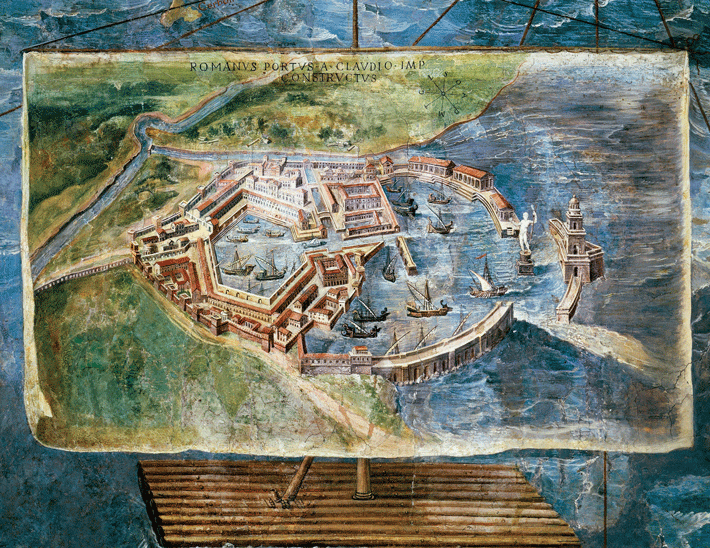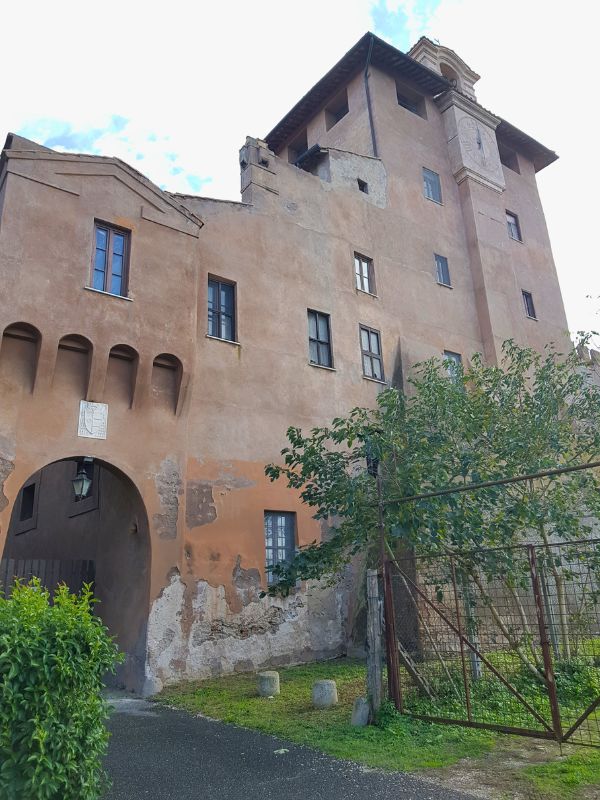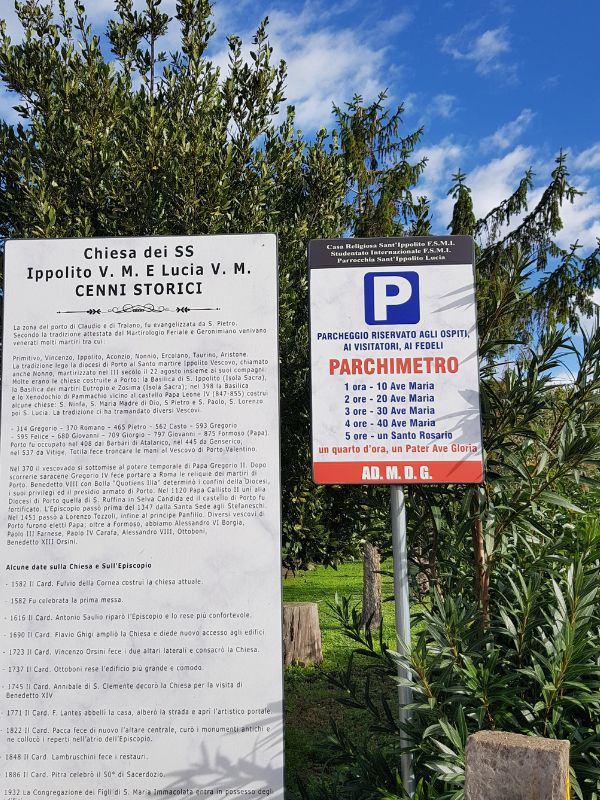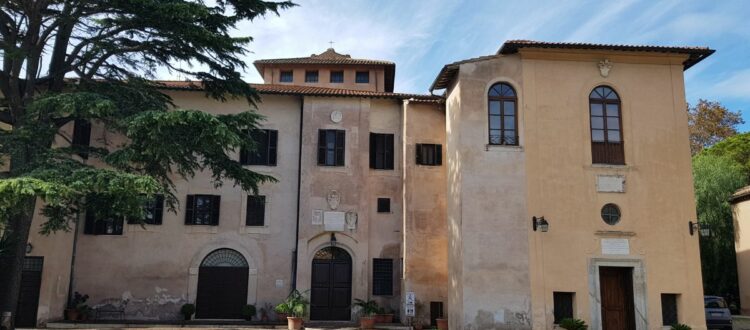A medieval village just outside Fiumicino: the Portus Castle
Just outside Fiumicino, along the Portuense road, you come across the majestic crenellated walls of an ancient fortified village. It is necessary to venture to the entrance to better understand what it is. We cross the threshold of a large gate, and here we are in the inner courtyard of the Castle or Episcopal Palace of Portus, an iconic place in Fiumicino that we wanted to draw inspiration from to name one of our superior rooms on the second floor of the Rome Airport Inn.
Looking around, observing the different structures, we understand that we are inside a small and evocative medieval “village,” dominated by the high tower of a castle.
But what exactly is the Portus Castle? What is its origin?
Let’s discover it together, taking a leap back in time.

A fortified village at the origins of Portus Castle
You should know that the history of Fiumicino has deep roots in antiquity. During Roman times, on the right bank of the Tiber, there was the settlement of Portus, a town that grew around the great imperial harbours of Claudius and Trajan, where ships laden with various goods found a safe harbor.
This city suspended between land and sea is the ancestor of Fiumicino.
It is a thriving city, home to a large Christian community, which is gathered in one of the oldest dioceses ever established: it is said to have been founded even in 211 AD, over a century before the Edict of Constantine, which proclaimed freedom of worship and ended persecutions against Christians.
But Portus is also and above all a place of intense commercial activities, a position of great strategic importance for Rome. Wine, wheat, oil—every kind of merchandise passes through here before reaching the Eternal City via the river. For this reason, over the centuries, Portus is besieged and captured several times, first by the barbarians and then by the Saracens.
After the collapse of the empire, invasions and raids follow one another.
It is during this period that, probably, the first nucleus of the present Portus Castle arises. In a document from 983 AD, a Fortress is mentioned, a small fortified settlement created for defensive purposes. Within these massive walls, the inhabitants of the ancient city, now in ruins, sought refuge.
But the Castle that gives its name to this place today is not yet there.
The Portus Castle in the 14th century: From inhabited center to noble fortress
We must reach the 14th century to witness the construction of the grand fortress that dominates the settlement of the Episcopal Palace. At that time, a noble and powerful family from Trastevere enters the scene.
These are the Stefaneschi, who extend their dominion over the area, making it their fief. It is they who build the imposing palace with a tower, erected above some structures from the Roman and early medieval periods. From here, they can easily control the entire surrounding territory.

In the hands of the Church: The restorations of the Episcopal Palace of Portus, the bishop’s seat
Within a century, the power of the Stefaneschi fades. The Episcopal Palace of Portus returns to its original owner: the Papal State. Several titular bishops of the diocese dedicate themselves to the restoration of the structures. Among them is Rodrigo Borgia, who reconstructs the crumbling walls, as evidenced by his coat of arms, still visible today.
However, this does not mean that the bishops reside here at the time.
The position of the Bishop of Portus is a highly elevated one, held by the subdean of the Sacred College, carrying numerous responsibilities and privileges, foremost of which is the duty to be in direct contact with the Pope. Consequently, those who held this position lived in Rome and certainly did not have the time and energy to personally dedicate themselves to the territory of the diocese. In their place, there were vicars, one of whom was assigned to Portus.
Here, the archpriest resided along with another priest. They were accompanied by a bailiff, whose task was to maintain public order. This was not too difficult a burden, considering that the area around the episcopal palace was essentially uninhabited.
The Episcopal Palace of Portus Today
Today, the Episcopal Palace of Portus is owned by the religious congregation of the Sons of Saint Mary Immaculate, who acquired it in 1930 and established their seminary there.
Its doors are open to visitors who venture here driven by curiosity or faith. Within the ancient fortified enclosure, there is the tiny church of Saints Hippolytus and Lucy. A place of worship important not so much for its size but because it houses the relics of the patron saint of Fiumicino, the martyr Saint Hippolytus, considered the first bishop of the diocese.
The religious community managing the facility welcomes everyone, providing ample parking. A sign at the entrance displays the hourly rates: to stay for 1 hour, they ask for “only” 10 Hail Marys.











